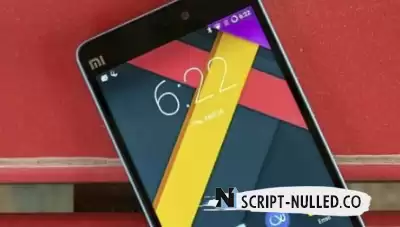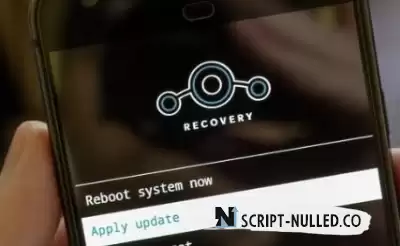LineageOS: what is it and why install it on a smartphone

Not everyone has the habit of changing their smartphone once a year, with the release of the next generation of the brand's favorite line. Someone cannot afford it, someone does not consider it necessary.
However, it is no secret that, unlike iOS, Android devices are supported by manufacturers for a very short time. Only in 2020, the same Samsung announced that it would release updates for its new models (just think about it!) Three years!
And if we are talking about some kind of nouname like Doogee or Fly, the picture there is completely depressing. What was stitched at the factory, go with it, Mr. lover of economy.
Others have the eleventh Android on board, and you have some kind of sixth or even fifth bucket.
There are other reasons to install custom Lineage-type firmware, which we will try to tell you about below.
If you are a seasoned user with extensive Android experience, then this article is not for you.
We do not aim to write a guide, but give you the opportunity to understand what this version of the OS is, and whether the reader needs it specifically.
A bit of history
It all started in 2008, when the first model on the Android platform, HTC Dream, was released, which allowed the use of rooting – obtaining privileged rights by the user of the operating system.
A little later, in 2009, Steve Kondik and a team of like-minded people began work on CyamogenMod, an alternative or custom version of Android based on its open source code, designed to replace pre–installed ones by the manufacturer.
At that time, the market was dominated by such now-forgotten names as Windows Mobile, Symbian, and the iconic iPhone had just entered the market.
However, Kondik saw the potential in the "ugly duckling", and in 2010 the first stable version of CyamogenMod 6 was introduced.
A couple of years later, entrepreneur Kirt McMaster pushed the developer to the idea of commercial use of his creation, which eventually brought only troubles.
A year later, the first OPPO N1 smartphone was released on the platform under the commercial name Cyanogen OS, and a little later, in 2014, the first of the most popular flagship line, OnePlus One.
However, as a result, relations with Chinese brands deteriorated, and in 2016 Kondik himself was turned away "politely asked" from Cyanogen Inc., which retained all rights to the brand.
However, unlike the same Andy Rubin, he did not give up, promptly created a fork, fortunately the CyamogenMod code was open, and started a new project called LineageOS, which successfully exists to this day – the next, 18th, stable version was released just six months before the time of writing this article.
The main reasons to install Lineage
They are quite enough to find those who are ready to mess with a not so simple, and sometimes unsafe flashing of a smartphone.
The ability to use the features of a more recent version of Android than the default one. For example, in the list of devices supported by the current LineageOS 18, based on Android 11, at the time of writing, there are models such as the Samsung Galaxy S4, announced in 2013, on which Android 4.2.2 Jelly Bean was installed by the manufacturer. How it will work is another matter.
Additional features that are missing in both stock Android and vendor shells.
More efficient use of system resources and battery power consumption.
Providing security for models that are no longer supported by the manufacturer: devices receive security patches over the air, just like Google's Android.
Privacy issues: There are no proprietary applications in LineageOS, including those from Google itself.
Combating politicized restrictions: bypassing the blocking of certain resources or services both by the authorities of the country where the user lives and from other countries.
For advanced users: the ability to modify the firmware code itself at their own discretion.
Aesthetic motives: unwillingness to use vendor shells, which are sometimes extremely fucking inconvenient, ugly, slow-moving and stuffed with unreadable advertising.
Shell Features
The appearance of the custom OS is almost identical to the stock Android, on the basis of which this version was created. I.e., the interface of Lineages 18 looks exactly like Android 11.
For many, this is an extra reason to flash your smartphone, because everyone knows for some reason it is believed that there is nothing better than a pure "droid" and there can be nothing.
As mentioned above, there are no Google services – and they are not cut out, namely, they are not installed: in AOSP, they are also missing, but are installed directly by the manufacturers.
However, by selecting the appropriate option during installation, they can be installed.
The set of pre-installed applications is also slightly richer than in stock. In contrast, it has its own WebView browser, Trebuchet launcher, Music Music application, AudioFX sound optimizer, cLock weather widget and a number of other generally useful software.
Among the "proprietary" functions are LiveDisplay, which allows you to adjust the color temperature of the screen depending on the time of day, PIN encryption, special "confidential" numbers that are not included in the list of outgoing calls, as well as LineageSDK – a set for developers.
Disadvantages of Lineage
There are more than enough of them, certainly not less than the advantages.
Lack of support for some modern technologies, both soft and hard. So, only in version 17 there was support for retractable cameras, such as, for example, on Xiaomi Mi 9T, or under-screen fingerprint scanners. Or there are still problems with the Substratum theme engine.
Numerous custom builds that are unrelated to the project developers, which do not receive security updates and may even contain viruses.
The need to unlock the bootloader. Not all models support this procedure, which is unsafe in itself. In addition, as a result, you can lose the warranty if someone decides to install the firmware on a fresh device.
Lack of support, which comes down to questions/answers on popular forums. It is quite possible that if the essence of the problem is correctly formulated, a solution will be found, but no one will give a guarantee.
The fleet of models officially supporting the OS is not that large – at the time of writing, it includes about 170 models.
The list of languages is less extensive than in Android, from the republics of the former USSR there are only Russian, Ukrainian and Lithuanian.

 Spain
Spain
 Portugal
Portugal





